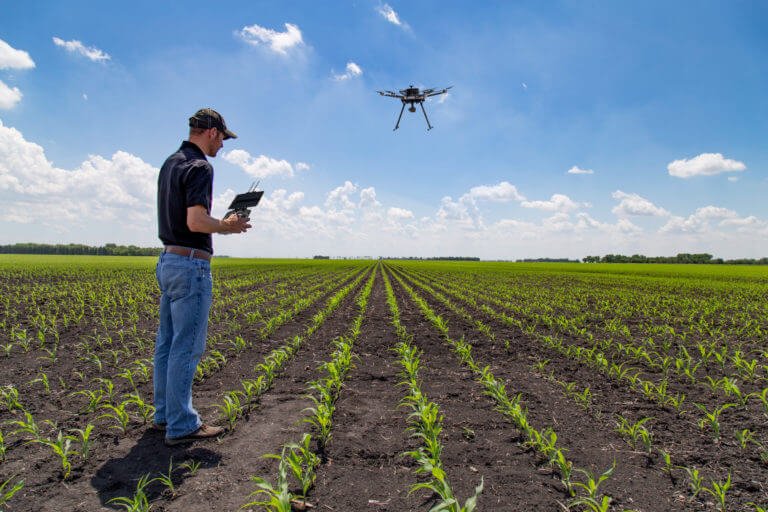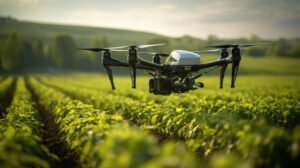Introduction
In today’s agriculture-focused world, the importance of crop inspection cannot be overstated. It plays a pivotal role in ensuring **food security**, optimizing crop production, and maximizing farm profitability. As global populations continue to rise and arable land diminishes, farmers and agricultural professionals are increasingly turning to more sophisticated methods of crop management. One of the core aspects of these methods is effective crop inspection.
What is Crop Inspection?
Crop inspection involves the systematic examination of crop fields to assess plant health, identify pests and diseases, and evaluate overall crop performance. This process is crucial for making informed decisions regarding pest control, fertilization, irrigation, and other cultural practices that influence crop yield and quality.
Why is Crop Inspection Important?
**Crop inspection** is vital for several reasons:
– **Early Detection of Problems**: It helps in the early detection of pests, diseases, and nutritional deficiencies.
– **Increased Crop Yield**: Timely interventions can significantly increase crop yield and quality.
– **Cost Efficiency**: It reduces the waste of resources like water and fertilizers by applying them selectively based on crop needs.
– **Sustainable Practices**: Supports sustainable agricultural practices by minimizing the use of chemicals through targeted applications.
The Evolution of Crop Inspection Techniques
Over the years, crop inspection has evolved from basic visual assessments to more advanced technological approaches. Let’s explore how these techniques have transformed over time.
Traditional Methods
Historically, farmers relied on their intuition and experience to inspect crops. This included visual examinations and simple tools to manually check soil moisture and plant health.
Technological Advancements
Modern technology has revolutionized crop inspection:
– **Drones and Aerial Imaging**: Drones equipped with cameras and sensors can cover large areas quickly, providing detailed imagery for analysis.
– **Satellite Imaging**: Offers large-scale monitoring capabilities and can detect changes in crop health before they become visible to the naked eye.
– **Sensors and IoT**: Soil and plant sensors can continuously monitor conditions and provide real-time data.
Key Components of Effective Crop Inspection
To conduct a thorough crop inspection, several elements must be considered:
Plant Health Assessment
Inspectors must look for signs of disease, pest infestation, and nutritional deficiencies. Healthy plants typically exhibit robust growth and vibrant coloring.
Soil Condition Analysis
Soil health directly affects plant growth. Parameters like pH level, moisture content, and nutrient composition are critical.
Weather Impact Monitoring
Weather conditions greatly influence crop growth. Monitoring temperature fluctuations, rainfall, and humidity levels helps in making proactive decisions.
Tools and Technologies for Modern Crop Inspections
Incorporating modern tools and technologies can significantly enhance the effectiveness of crop inspections:
Drones
Drones provide a bird’s-eye view of crops, making it easier to spot irregularities and monitor large areas efficiently.
Mobile Apps
Several agricultural apps allow farmers to record observations, track inspection schedules, and even integrate data from sensors.
Machine Learning Models
Advanced algorithms can predict crop health and yields by analyzing data from various sources, including past inspections.
Crop Inspection Best Practices
Adhering to certain best practices can optimize the inspection process:
Regular Scheduling
Regularly scheduled inspections ensure problems are caught and addressed promptly.
Comprehensive Documentation
Maintaining detailed records of inspections helps in tracking progress and identifying patterns over time.
Expert Consultations
Sometimes, consulting with agricultural experts can provide insights beyond the basic observations from regular inspections.
Global Impact of Effective Crop Inspection
Effective crop inspection has a profound global impact:
Food Security
By maximizing crop yields and reducing losses due to pests and diseases, crop inspections contribute to greater food security.
Economic Benefits
Higher yields translate into better profitability for farmers and lower food prices for consumers.
Environmental Sustainability
Efficient use of resources and reduced chemical inputs contribute to more sustainable agricultural practices.
Conclusion
Effective crop inspection is a cornerstone of modern agriculture. With the integration of advanced technologies and methodologies, it has transcended beyond the traditional approaches to become a key driver in optimizing agricultural practices. By embracing these advancements, farmers not only boost their productivity and profitability but also contribute to a more sustainable and secure food future. Remember, the goal of crop inspection is not just to inspect, but to protect and enhance the very foundation of our food supply.




